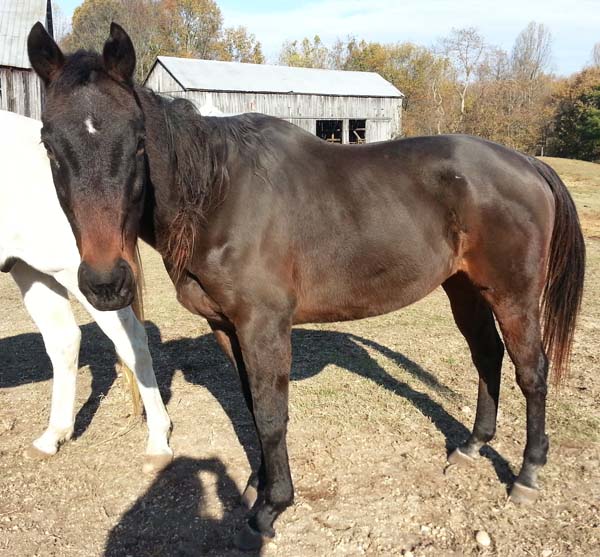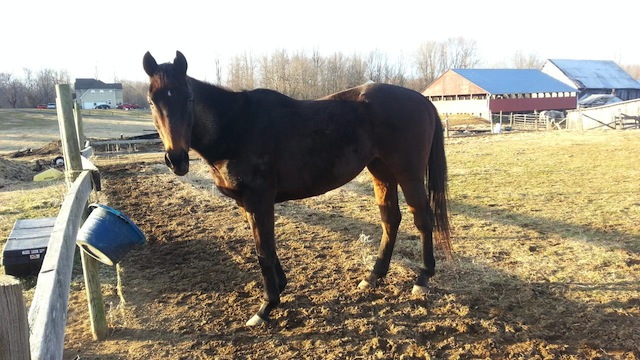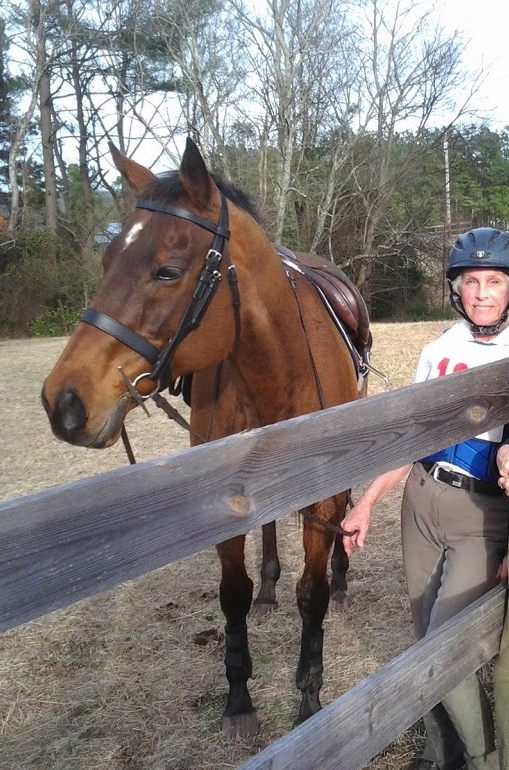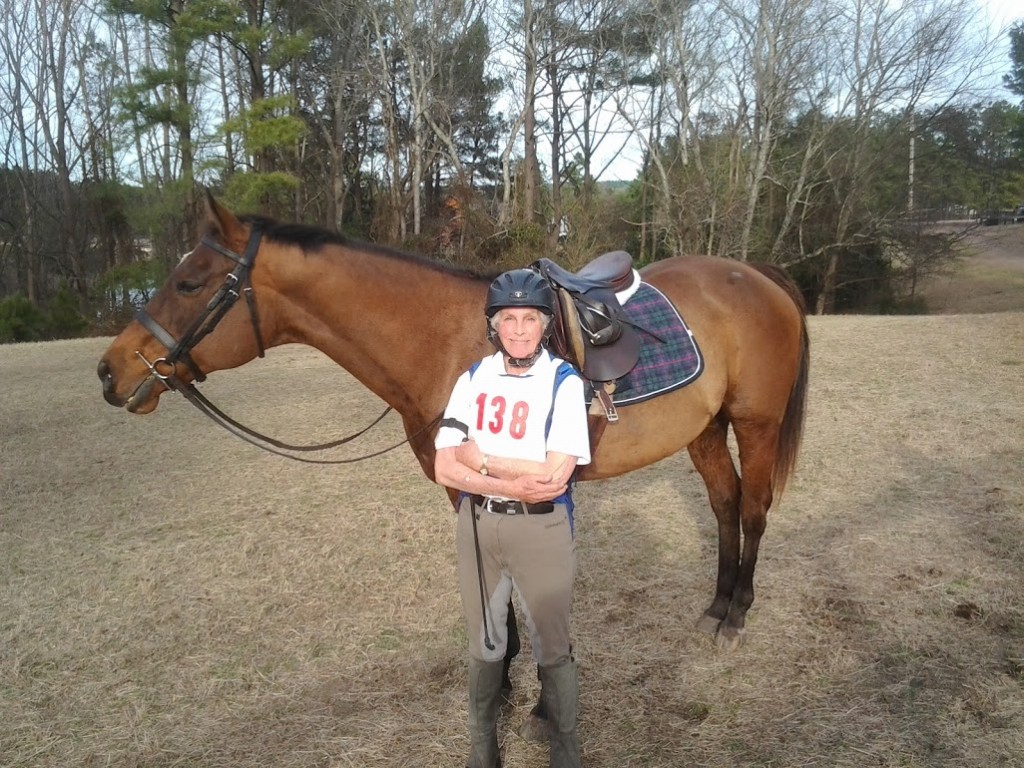
Tri is pasture sound and enjoying his life as companion to other horses at Traveler Rest Farm in Maryland.
He gave and they took.
And for too many years, that was the life for Tri Tower’s, an unremarkable little horse with a body weakened from racing, but a heart strong enough to love his people.
By the time he retired in 2003, the unremarkable looking racehorse had ankles the size of large naval oranges, and a body and spirit so worn and tired he was incapable of fending off the herd for a simple bite of the hay bale.
“Tri was always at the bottom of the pecking order,” says Beth Kokoruda, a Maryland-based equestrian who runs a retirement farm for aging horses. “He’s not dominant at all, so if another horse pinned his ears, Tri would be easily pushed off his food; I had him in with a pony who used to push him off his food until he realized he was bigger than that pony” and finally held his ground.
Though his place in this world has been secure for 10 solid years, he was once destined to go the way of so many used-up animals. That’s when Kokoruda agreed to take him, following his last-minute rescue from a kill pen by University of Maryland students studying nutrition in starved animals.
Tri Tower’s
Sire: Belek
Dam: True Carier
Foal date: March 27,1993
Earnings: $119,448 in 78 startsAfter running his last race at Penn National in 2003, he had logged 78 starts and just shy of $120,000 in earnings.
Advertised briefly in the sales listing by re-homing organization CANTER, the animal eventually wound up at the New Holland auction later in 2003, where he was discovered.
University of Maryland students seeking to develop best practices in the feeding of emaciated horses purchased the ragged horse from New Holland, and determined his Body Score was between 1 and 2 at that time, she says.
After weeks of care and feeding however, the animal regained a healthy weight, but the toll from years of racing made him unsuitable for any future career, Kokoruda says.
But through a lucky change of fate, Tri found a home with Kokoruda in 2004, and though he has not carried a rider in 10 years, has proven his worth beyond measure.
She first learned about the horse from reading his biography on University of Maryland’s website, which published the sad stories of the horses they’d obtained from kill pens. In Tri’s case, she learned that despite the best intentions of people who helped him get listed for sale after racing, and the further effort by students to restore his health and retrain him for a job, that his poor body could no longer be counted on to carry the weight of a rider.
What he needed was like finding needle in a haystack: He needed a job as a pasture ornament.
“I’m a sucker for a horse with a story, and when I saw his picture—he’s just a plain brown horse with a small white star, there’s nothing flashy about him at all—and I read his story, I looked up his race record, and thought, man, this horse just needs a break.”
By chance, she was looking for a companion horse to share a pasture with her retired show horse Traveler, who eventually died in 2009, and agreed to take him in August 2004.
And that’s how an undistinguished horse, with a quirky pension for bolting through open doors like a jet through a starting gate, entered her life for good.

Tri had some difficulty keeping weight on as low horse in the herd. But recently given a pony pal, he has finally seized control of the hay bale.
An animal, still sore and prone to lameness, who can’t even defend a claim to a hay pile, makes up for physical shortcomings with his charming personality.
Every morning, as she leaves her house to head to work, Tri Tower’s greets her at the fence line, and offers up a melodious sound that seems part whinny and part nicker.
“I call him my songbird,” she says. “He has this beautiful little whinny, which is really a quiet song. And in the morning when I come out to my car to head to work, he’ll sing to me when he sees me—it makes it all worth it.”
Since agreeing to give a home to Tri Tower’s, Kokoruda has offered a retirement home to other aging horses. It is her second full-time job, supported by her full-time career at the Patuxent River Naval Air Station, in the office of the chief information officer.
“I feel obligated to help Tri, and others like him, complete the journey. Tri was a horse who has given, given, given, and people have taken, taken, taken,” she says. “This is my way to give something to a horse who didn’t have it as good as some other horses.”








